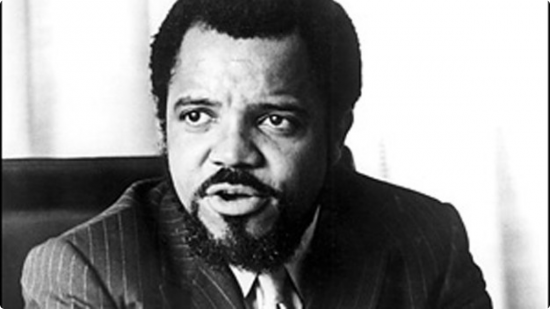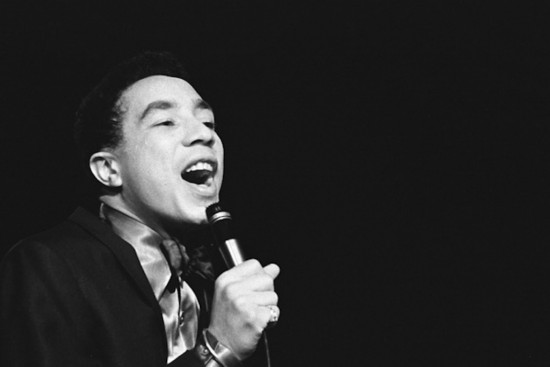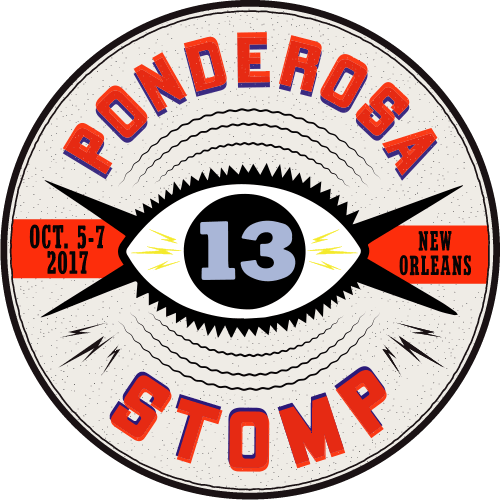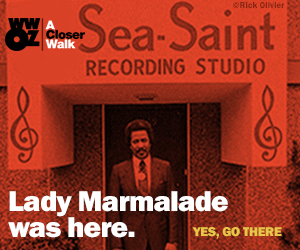WRITTEN BY BILL DAHL
The way Brenda Holloway stunningly filled a skintight gold pantsuit certainly caught Berry Gordy’s eye the first time they crossed paths, but her seductive pipes were ultimately the reason she was Motown’s first notable Los Angeles discovery in 1964.
If ever there was a born star, it was surely the statuesque Holloway, but the geographical divide between L.A. and Detroit may have worked her against her within the Hitsville hierarchy. Nonetheless, she waxed some of the most seductive soul in the entire Motown catalog, scoring several major hits along the way.
“A LITTLE CRY IN HER VOICE”
Born June 21, 1946 in Atascadero, Calif., and raised in Watts from age 2, Brenda and younger sister Patrice were immersed in musical activity as children. “I grew up singing in church,” she said. “I used to sing in the choirs and stuff, but I sang in school too.”
Stardom was seemingly her destiny. “I’d tell my mother when I was 7, ‘I’m gonna be on TV!’” she said. “She said, ‘Well, that’s fine, but can you get from out in front of the TV? ‘Cause we can’t see it!’ I’d just want to go and pick the people out of the TV.”
Holloway studied violin in elementary and high school. “I just used to love the sound of a violin. The violins just take you away. I’d be outside in the backyard, and the dogs would be howling, and I would be playing my violin.”
The era’s female chanteuses were influential to her development. “I listened to a lady by the name of Sarah Vaughan, and Dinah Washington, and Aretha Franklin, and Dionne Warwick, and Mary Wells,” she said. “Teresa Brewer, she was not a black artist, but she had a little cry in her voice. And my sister and I, we just developed that.”

When she was only 12, Patrice made her first 45, a dance number called “Do The Del-Viking,” produced for the tiny Taste label by Hal Davis.
“It was a local hit,” said Brenda. “She liked to eat a lot of food. And she was real chubby. And she said, ‘I’m gonna keep on eating ‘cause I’m hungry, but you can dance, because Brenda, you have the figure! So you go ahead and do the dance, and I’m gonna go out and just sing.’ So I said, “OK!’ So I went with her, and I was doing the dance and demonstrating the dance, and she was singing. And it went over very well.”
BUDDING DIVA MAKES 1962 DEBUT
Brenda, who sang with Whispers founders Walter and Wallace Scott in high school, didn’t have to wait long to cut her solo debut. Record shop owner (and 2013 Ponderosa Stomp co-star) Kent Harris, who made a pair of raucous 1956 singles for Crest as Boogaloo and His Gallant Crew, helped bring Holloway to Del-Fi Records boss Bob Keane’s attention.
Keane, who had previously discovered Ritchie Valens, cut Brenda’s “Echo” for his Donna label in 1962, and was so enraptured that he tried twice more to break the fetching ballad under the titles “Echo-Echo-Echo” and then “More Echo.” It didn’t work.
https://www.youtube.com/watch?v=QN-f-JlAbLg
Holloway was also a member of the Wattesians, whose bouncy girl group confection “I’ll Find Myself A Guy” came out on Donna the same year. Hal Davis, a Cincinnati émigré soon to become Motown’s L.A. head (he would become known on the Coast as “Mr. Motown”), was instrumental in their formation.
“Hal had put the group together with me, Priscilla Kennedy, Pat Hunt, and a girl named Barbara,” said Brenda. “That’s how it really actually started, doing background with my group, the Wattesians.” As a prelude to their many Motown collaborations, Davis and Holloway cut “It’s You” b/w “Unless I Have You” as Hal & Brenda for Minasa in 1963. That same year, Brenda cut a solo “I Ain’t Gonna Take You Back” for Catch.
“AT ONE POINT I WAS GOING TO MARRY HAL”
“Hal lived in the studio. Hal ate breakfast, dinner, lunch — they should have had a shower there for him,” said Holloway. “He was a fabulous producer. Hal, he made up for all of his shortcomings and all of his problems in his music. He had polio. His mother used to take him around, and didn’t get his injections, and she’d take him around singing in churches and stuff. She just didn’t have enough education. I don’t even know if the vaccine had been perfected then. But Hal caught polio, so he had a shoe that was really big.
“I was actually Hal’s girlfriend after I got out of high school,” continued Brenda. “At one point I was going to marry Hal, but he was just a little bit too old for me. He wasn’t my mom’s choice for a husband. She loved Hal, but my mother asked me not to marry him.”
“I AM BERRY GORDY”
An introduction to Berry Gordy was Holloway’s primary goal when she and manager Davis attended a deejay convention at the Cocoanut Grove nitery in L.A.’s Ambassador Hotel. She dolled herself up in an eye-popping ensemble guaranteed to quicken attendees’ pulses. “It was actually a gold lamé pants set,” she said. “‘(Hal) told me, ‘I can get you an interview with Berry Gordy.’ I said, ‘No, you can’t!’ He said, ‘Yes, I can! I have a friend that’s going to be coming down. His name is Jack, and he’s with Berry. I want you to come go with me on Saturday, and you can sing!’ They had a lot of different suites and a lot of different people, and a lot of other disc jockeys.

“Then I started singing a song called ‘My Guy’ ‘cause I didn’t have any songs of my own. I loved Mary Wells, and she was Miss Motown right from the beginning, so I kept going from room to room and meeting different people, and singing ‘My Guy,’” said Brenda. “We were there from about 10 o’clock in the morning. It was really early. I kept on singing until about one or two o’clock. I was like, ‘Oh, Hal, this is ridiculous! I’m tired!’ ‘Cause I had on high heels, and I’m only 16 years old. I was trying to look grown and look cute and all that, but I was getting tired. In a minute this group of men had came in the room.
“I remember this little short man; he stood out in my mind. I didn’t know who he was, but I told him, ‘You know, I’m trying to meet Berry Gordy. Where is he? ‘Cause I’m getting tired. I’m ready to go home, ‘cause I’ve been here singing since early this morning.’ So they went in the room, and he came back. He said, ‘I am Berry Gordy!’ I almost fell through the ground! I said, ‘Huh?’ He said, ‘I am Berry Gordy. I really like the way you sing, and I want to sign you up. The only catch is that you’re going to have to graduate before I’ll do anything with you.’ I said, ‘I can do that!’ And he signed me up.”
Rather than fly her back to Hitsville, Hal and his production partner Marc Gordon helmed Brenda’s first 45 for Berry’s Tamla imprint, the stately uptown soul masterpiece “Every Little Bit Hurts,” in Los Angeles.
“Frank Wilson was responsible. This guy named Ed Cobb wrote the song,” said Brenda. “He did some songs for Ketty Lester, ‘Love Letters.’ And I really, really liked the song, but Frank Wilson’s wife at the time, she did a demo. And I loved the way Barbara sang. I could never do this song justice, because they let Barbara do the demo, and you know I wasn’t any competition for Barbara. I said, ‘Let her do it!’ They went, ‘No, no! You can do it!’ I said, ‘No, I can’t!’ So we were like feuding and fussing. Hal said, ‘Well, I’m making the decision. You’re gonna do it!’ I’m like, ‘OK.’ So at the session, he was fussing like he always did, and I was crying. Everybody said, ‘How did you get that much feeling?’ I said, ‘Cause I was really crying. Hal made me mad!’”
“I WAS LOOKING FOR A PERFECT MAN!”
“Every Little Bit Hurts” was done at engineer Armin Steiner’s facility, which happened to be located in his Hollywood garage. “Upstairs, he had converted it to a recording studio,” said the late Wilson. “Every Little Bit Hurts” bounded all the way up to #13 on Billboard’s pop charts in the spring of 1964, and Holloway was suddenly a star. But there was a tragic footnote. “Shortly after Barbara did the demo,” said Brenda, “she died.” Brenda wrote its charming flip side, “Land Of A Thousand Boys,” with her sister Patrice. “Now you know why I wrote that one — I was looking for a perfect man!” she laughed.
Dick Clark featured photogenic Brenda on “American Bandstand” and invited her to join his nationally touring “Caravan of Stars” that summer. “It was fabulous,” said Holloway. “We did get tired because we were traveling a lot on the bus. But Dick saw to it that even in the years when there was a lot of prejudice, if everybody couldn’t eat at one place, then Dick would take us to the most fabulous restaurants. I don’t eat steak now, because for 40 days I ate steak on the Dick Clark ‘Caravan of Stars’!” That was the same tour where the Supremes climbed from supporting act to headliner on the strength of their brand-new smash “Where Did Our Love Go.”
VYING FOR SUPREMACY
Cobb, formerly of the well-scrubbed Four Preps (they crashed the pop charts in 1958 with “26 Miles [Santa Catalina]” and “Big Man”), penned another sublime ballad for Brenda’s Tamla encore. Davis and Gordon produced “I’ll Always Love You,” which charted pop that summer on a smaller scale. “That song would have been another big hit for me. But because they were trying to establish my sister group, the Supremes, our cells were conflicting. They wanted theirs to go to a million,” said Brenda. “They pulled my song back in for a minute, and then when they put it back out, it didn’t gather the momentum.
“When I came to Motown, all the black writers were writing for the black artists. I came from L.A., and I had perfect diction,” she said. “Geographically, I was just far, far away from them, because I was from Hollywood. A whole different world. So my writer was white, and they thought, ‘Who’s writing these fabulous songs?’ And we said Ed Cobb. ‘Ed Cobb?’ He was unbelievable. Just unbelievable.”
Wilson scribed the spine-chilling B-side, “Sad Song.” “I’ve always loved Frank’s writing because Frank, he would tailor-write the songs for the artists,” said Brenda. “He would really get into the artist, really deeper than any of the other people that I know. Frank sat down. He practically lived with us. He watched our family. He knew my mother. He knew all of us. He ate at my house. We kicked it. Frank was just a natural writer. I had a crush on Frank at first, but then I realized that Frank was a busy man, and the women were pulling after him. But he was always a perfect gentleman.”
https://www.youtube.com/watch?v=dCBYb9sv5bY
Holloway’s only Tamla album, logically titled “Every Little Bit Hurts,” was largely supervised by Davis and Gordon in L.A. and dominated by splendid ballads. It found Holloway exploring Motown’s Jobete Publishing songbook as well as the pop chestnuts “Unchained Melody” and “Embraceable You.” Standouts included Wilson and Jeffrey Bowen’s “Too Proud To Cry,” Hal’s “Can I” (Eddie Kendricks’ revival would be a 1971 hit), and her own “Suddenly.”

Brenda inherited a few goodies left in the can when Wells defected on her 21st birthday. She also inherited Mary’s producer, Smokey Robinson, who produced her sultry mid-tempo “When I’m Gone” in Detroit. “He let me hear Mary Wells’ version,” said Brenda, who was sorry to see her one of her favorite singers exit. “I was sad, but I was happy that I got a chance to sing that song. ‘Cause everybody wanted a song from William Robinson.” Holloway and the Hitsville crew meshed seamlessly, and “When I’m Gone” became a solid hit in early ‘65.
https://www.youtube.com/watch?v=5KhcqxIUi6M
Smokey delved into his cache of overlooked Wells gems again for “Operator,” the flip of Mary’s smash “Two Lovers” in 1962. It fit Brenda handily — she enjoyed a hit with it in mid-‘65. Its jaunty B-side, “I’ll Be Available,” was another of Smokey’s metaphorically enriched gems that Wells had done just before leaving. “Smokey’s a natural,” she said. “You just sing his song, you know it’s going to be a hit, ‘cause he’s a poet. He’s going to make it rhyme and reason and sound good and sexy and all that.”
Brenda opened for the Beatles during their chaotic 1965 U.S. tour. “We couldn’t even hear ourselves. We were in San Francisco, and the crowd got loose. Everybody said, ‘Get out of there! Throw your wig away! Do whatever, just get out of there!’ That wig came off. We went running! Because it was like a big herd of cattle, thousands and thousands of people, charging for the stage,” said Brenda. “We were scared. Guitars and everything was going in the air!”
“ALL THE LICKS AND ALL THE CURVES”
After that, her momentum sagged. Berry’s “You Can Cry On My Shoulder” never made it past “bubbling under” status in the fall, and Wilson’s “Together ‘Til The End Of Time,” a ballad reuniting her with her boyfriend Davis and Gordon as producers, did no better in early ‘66. Mickey Stevenson and Hank Cosby took over for a dramatic “Hurt A Little Everyday” later that summer (“Where Were You,” an up-tempo ditty from the Lewis Sisters, occupied the B). A second proposed album, “Hurtin’ & Cryin’,” was canceled.
But Wilson reinvigorated his friend’s chart fortunes in 1967 with the pounding “Just Look What You’ve Done For Me,” a collaboration with R. Dean Taylor that just missed the R&B Top 20 that spring. “I wrote that for her before Berry asked me to move to Detroit. I didn’t cut it until I got to Detroit,” he said (it was paired with the Ashford & Simpson-penned rouser “Starting The Hurt All Over Again”).
“I was so comfortable in his lyrics and his melodies. It was like a part of me. Frank’s songs were a part of me. Smokey’s songs I studied,” she said. “But on Frank’s I could be me, ‘cause all the licks and all the curves and all the words and all the feelings, they were tailor-made, like Mary’s songs were written by Smokey,” she said.
“THIS IS A HIT!”
Brenda co-wrote one of Jobete’s most valuable copyrights, the exhilarating “You’ve Made Me So Very Happy.” “That’s the song we wrote in Las Vegas,” said Frank. “We were there for a business meeting for Motown; all of the staff and everybody was there. And I think one of our acts was playing Las Vegas as well. Brenda and Patrice were there, and she was working on a chorus, and so she had Berry listen to it. And Berry called me, and we got together and we wrote the song.”
“Berry was giving me a few pointers on the tense of a song said Brenda — like present tense. Your songs always have to come from the present tense,” said Brenda. “Then my boyfriend quit me. I said, ‘I’m so sad. You know what? I’m gonna write a song about being happy, ‘cause this man is crazy! Leaving me?’ I said, ‘I’ll show him,’ like the new guy came into my life after this piece of trash left, and I was watching him leave!
“I said, ‘Patrice, come here and help me. This is a hit!’” Soon Brenda and Patrice (who cut an unissued “For The Love Of Mike” for Motown) had the song worked out. “I got on the phone and said, ‘Berry, I think I’ve got a hit! Berry, come on and listen to it!’ He listened to it, I played it. He said, ‘I think you got a hit. I’ll be right over.’” Wilson handled the bridge. “That made the song!” she said.
“I WILL ALWAYS LOVE MOTOWN AND YOU!”
When Berry took her into the studio, Brenda was less than thrilled with the mellow tempo he wanted. “I was upset with Berry, because I didn’t want to do the song like that,” she said. “We were on the verge of the psychedelic, all that rock and funk and all of that. I’m like, ‘Uh-uh, Berry, I want to do it different.’ And then again, ‘I’m Berry Gordy. You’re Brenda Holloway. I’m putting up the money. We will do it the way I want it, thank you.’”
Brenda’s compelling rendition stalled after reaching the Top 40 in late ‘67, but Blood, Sweat & Tears’ remake catapulted the rockers to gold-record status a couple of years later. “I wanted to do it like Blood, Sweat & Tears,” said Brenda. “Thank God for the other version!” laughed Wilson, who wrote the attractive B-side for Holloway, “I‘ve Got To Find It.”
It would be Brenda’s last Motown release. She wrote a letter to Gordy confiding her suspicions that she was being discriminated against when it came to top material, grooming, TV opportunities, and management. The 21-year-old star bemoaned what she considered second-tier treatment because she hailed from the West Coast, though her postscript “I will always LOVE Motown and you!” suggested this was much less than an ultimatum.
“He took it as that. He had a lot of challenges, and he had a lot of artists besides me,” she said. “Berry wanted me for Vegas, because I’m from L.A. And I wasn’t interested in nothing but making some hits on the charts, Motown style. I don’t want to wait for Vegas. I’m only 19, 20 years old. Vegas is for old people. Vegas is for dancers. What am I doing? So Berry and I would constantly bicker about what he was trying to save me for. You know, you’re so impatient when you’re 19, 20. You don’t know what you’re doing. All you want to do is just do everything fast, and just stumble and fall over yourself. But anyway, we would conflict.”
“I WAS GETTING LOST IN THE SHUFFLE”
“For me to go to Motown and not get the immediate attention that I really needed to do my craft and my artistry, it just really, really staggered me. And I was just very, very unhappy because I was getting lost in the shuffle too many times. So I expressed that to Berry. He was getting ready to do something, but I just got so frustrated. So frustrated until — so you know I was crazy — I was in the middle of a session with Smokey — and left. I snuck out of the studio, got in a cab, and came back to Los Angeles.
“I was pulling a move that was not a stable one,” she concluded. “I should have listened to the logic of Berry Gordy and just had patience and just waited. Because every promise that he made me, he fulfilled it.”
Brenda married the Rev. Alfred Davis and disappeared from public life at the ripe old age of 22, though there was a 1972 single for H-D-H’s Music Merchant label, “Let Love Grow” b/w “Some Quiet Place.” Holloway officially reemerged in 1995 to perform with Brenton Wood on the L.A. oldies circuit. In 1999, she was honored with a prestigious Pioneer Award by the Rhythm and Blues Foundation. That same year, Fantasy’s Volt subsidiary released Brenda’s first new domestic secular album in 35 years, “It’s a Woman’s World.”
Brenda’s secular pursuits contrast with her sanctified activities as a member of Blinky Williams’ Hollywood Choir. “I’m doing fine. I’m happy, I’m secure, I’m still singing,” she reported. And she still looks great in gold.
Don’t miss Brenda Holloway at the 2015 Ponderosa Stomp in October, where she’ll be singing as part of a soul-diva revue featuring Irma Thomas, Barbara Lynn, and Mable John. Buy your tickets here!








